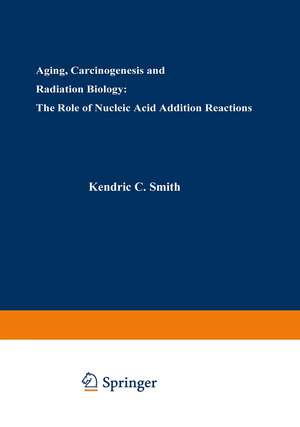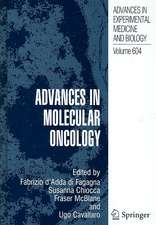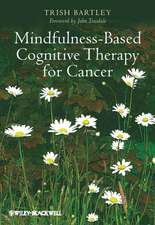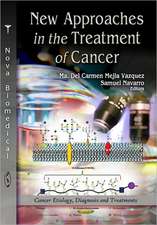Aging, Carcinogenesis, and Radiation Biology: The Role of Nucleic Acid Addition Reactions
Editat de Kendric Smithen Limba Engleză Paperback – 9 ian 2013
Preț: 391.58 lei
Preț vechi: 412.19 lei
-5% Nou
Puncte Express: 587
Preț estimativ în valută:
74.93€ • 78.23$ • 62.01£
74.93€ • 78.23$ • 62.01£
Carte tipărită la comandă
Livrare economică 05-19 aprilie
Preluare comenzi: 021 569.72.76
Specificații
ISBN-13: 9781475716641
ISBN-10: 1475716648
Pagini: 576
Ilustrații: XI, 561 p. 23 illus.
Dimensiuni: 178 x 254 x 30 mm
Greutate: 0.98 kg
Ediția:Softcover reprint of the original 1st ed. 1976
Editura: Springer Us
Colecția Springer
Locul publicării:New York, NY, United States
ISBN-10: 1475716648
Pagini: 576
Ilustrații: XI, 561 p. 23 illus.
Dimensiuni: 178 x 254 x 30 mm
Greutate: 0.98 kg
Ediția:Softcover reprint of the original 1st ed. 1976
Editura: Springer Us
Colecția Springer
Locul publicării:New York, NY, United States
Public țintă
ResearchCuprins
I. Natural Nucleic Acid-Protein Adducts.- Attachment of Chromosomes to Membranes in Bacteria and Animal Cells.- Linkers in Mammalian Chromosomal DNA.- Amino Acids Bound to DNA.- Gene Regulation: Selective Control of DNA Helix Openings.- II. Experimentally-Induced Nucleic Acid Adducts.- Radiation-Induced Cross-Linking of DNA and Protein in Bacteria.- UV-Induced DNA to Protein Cross-Linking in Mammalian Cells.- Role of Protein in the Inactivation of Viruses by Ultraviolet Radiation.- In Vitro Studies of Photochemically Cross-Linked Protein-Nucleic Acid Complexes. Determination of Cross-Linked Regions and Structural Relationships in Specific Complexes.- Photosensitized Cross-Linking of Proteins to Nucleic Acids.- Ionizing Radiation-Induced DNA-Protein Cross-Linking.- Chemically Induced DNA-Protein Cross-Links.- Photochemical Addition of Amino Acids and Related Compounds to Nucleic Acid Constituents.- Addition of Amino Acids and Related Substances to Nucleic Acids by Nucleophilic Catalysis.- Photochemically-Induced Adducts of DNA.- Ionizing Radiation-Induced Attachment Reactions of Nucleic Acids and Their Components.- Repair of DNA Adducts Produced by Alkylation.- Photoaffinity Labeling of Proteins and More Complex Receptors.- III. Relevance of DNA Adducts to Cancer Biology.- Chemically and Metabolically Induced DNA Adducts: Relationship to Chemical Carcinogenesis.- Involvement of Radicals in Chemical Carcinogenesis.- Role of DNA Repair in Mutation and Cancer Production.- IV. Relevance of DNA Adducts to Aging.- Cross-Linkage Hypothesis of Aging: DNA Adducts in Chromatin as a Primary Aging Process.- Dose, Dose Rate, Radiation Quality, and Host Factors for Radiation-Induced Life Shortening.- Protection of Environmentally Stressed Human Cells in Culture with the Free Radical Scavenger, dl-?-Tocopherol.- Role of DNA Repair in Aging.







